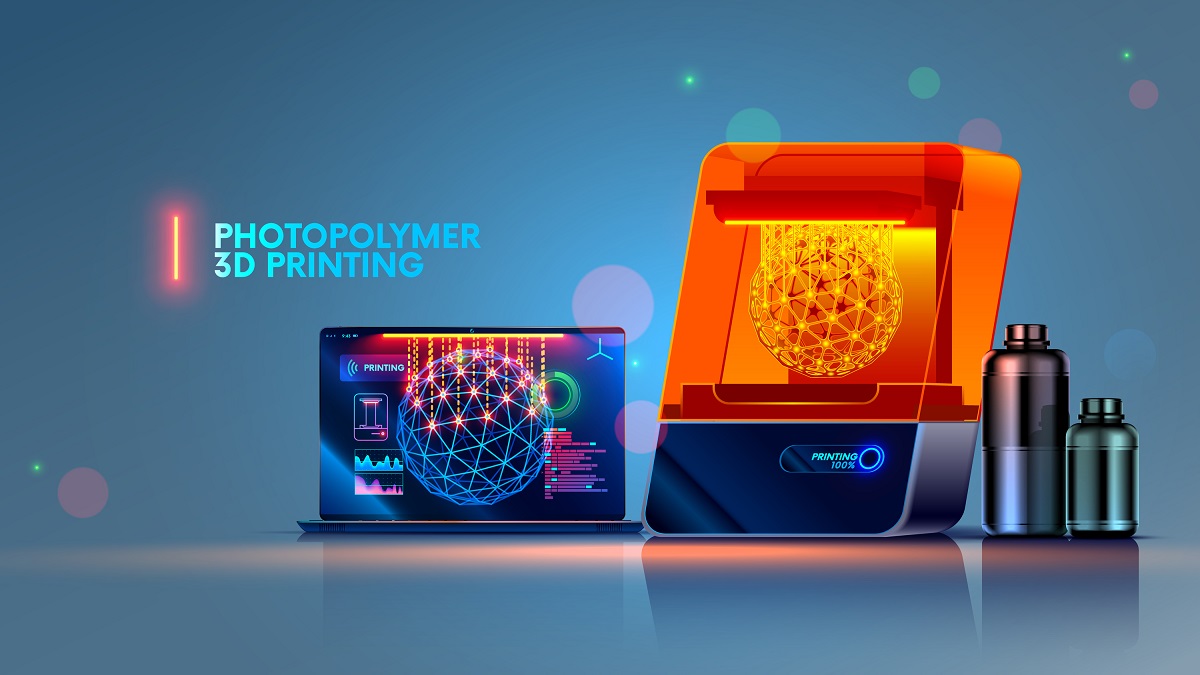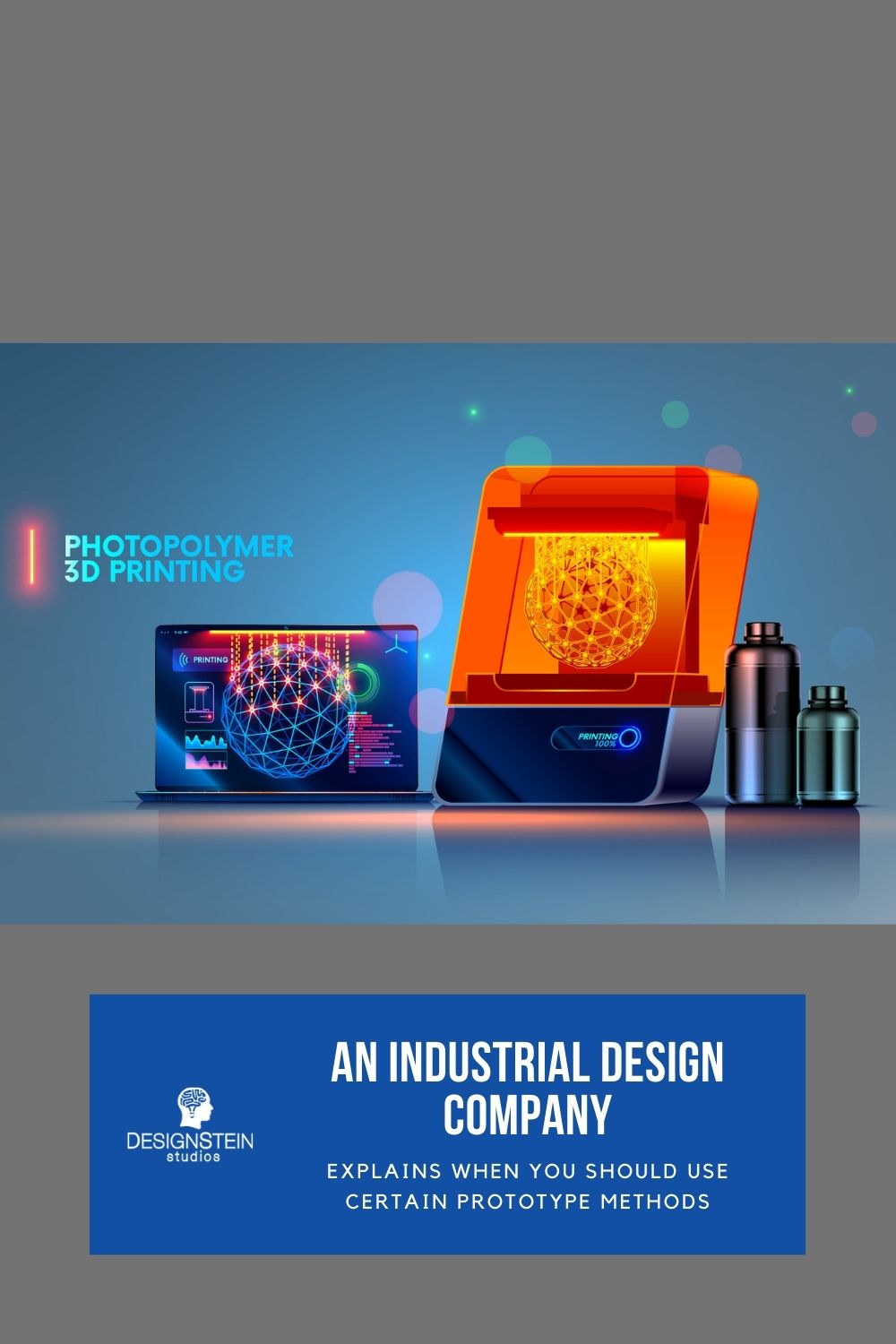It can be very overwhelming for many designers when and what prototype methods they should use. The professionals at an industrial design company tell us that there is a difference between FDM printing, Stereolithography printing, casting urethane parts, and CnCing parts.
Many industrial design companies in California can tell you when you are early in your project you want a prototype that is rough and fast. For that reason, FDM printing is usually the first prototype method used. Normally, the machines that industrial design services have are low-tech, fast, and have affordable material.
FDM printing allows you to print rough concepts quickly so you can make mistakes and correct them. When a project continues and more accuracy is required, an industrial design company will usually turn to stereolithography (STL) printing. This prototyping method uses a resin and laser to produce layers of plastic as thin as 0.10mm. When your project is close to its complete design you will be advised to either CnC the product from the actual material used in production or make a cast urethane part.
Bear in mind that these prototypes are a lot more expensive but they are very similar to a mass-produced part as you can achieve without opening production tooling.
What Are The Different Types of 3D Printing Technology?
The word 3D printing includes various manufacturing technologies that build parts layer-by-layer. Each is different in the way they form plastic and metal parts and can vary in material selection, surface finish, durability, and manufacturing speed and cost.
There are a few types of 3D printing, which include:
- Stereolithography (SLA)
- Selective Laser Sintering (SLS)
- Fused Deposition Modeling (FDM)
- Digital Light Process (DLP)
- Multi Jet Fusion (MJF)
- PolyJet
- Direct Metal Laser Sintering (DMLS)
- Electron Beam Melting (EBM)
Choosing the appropriate 3D printing process for your application at an industrial design company needs an awareness of each process’s strengths and weaknesses laying out those attributes to your product development requirements.
Firstly, here is how 3D printing fits within the product development cycle and then take a glimpse of the most common types of 3D printing technologies and the benefits of each.
3D Printing for Rapid Prototyping and More
It is safe to assume that 3D printing is more often than not used for prototyping. It can be used to quickly manufacture a single part enables product developers to approve and share ideas in a cost-effective manner. When you figure out the purpose of your prototype will let you know which 3D printing technology will be the most advantageous. Additive manufacturing is perfect for a range of prototypes that go across from simple physical models to parts used for functional testing.
Although 3D printing is almost equivalent to rapid prototyping, there are outlines when it’s a feasible production process. Frequently, these applications involve low-volumes and complex geometries. Most of the time, components for aerospace and medical applications are perfect candidates for production 3D printing as they usually match the criteria previously described.
Five 3D Printing Considerations
Similar to other things in life, there’s hardly ever an easy answer when choosing a 3D printing process. When we help customers evaluating their 3D printing options, we usually identify five key criteria to find out what technology will meet their requirements:
- Budget
- Mechanical requirements
- Cosmetic appearance
- Material selection
- Geometry
Polymer 3D Printing Processes
Here are some common plastic 3D printing processes and what each provides the most value to product developers, engineers, and designers.
Stereolithography (SLA)
Stereolithography (SLA) is the most standard 3D printing process. SLA printers are excellent at producing parts with high levels of detail, smooth surface finishes, and tight tolerances. The quality surface finishes on SLA parts, not only look great but can help in the part’s function—testing the fit of an assembly, for instance. It’s generally used in the medical industry and common applications consist of anatomical models and microfluidics.
Selective Laser Sintering (SLS)
Selective laser sintering (SLS) melts together nylon-based powders into solid plastic. Since SLS parts are constructed from real thermoplastic material, they are durable, suitable for functional testing, and can support living hinges and snap-fits. Unlike SL, parts are stronger but have rougher surface finishes. SLS doesn’t need support structures so the whole build platform can be utilized to nest multiple parts into a single build—making it appropriate for part quantities higher than other 3D printing processes. Various SLS parts are used to prototype designs that will eventually be injection-molded.
Fused Deposition Modeling (FDM)
Fused deposition modeling (FDM) is a prevalent desktop 3D printing technology for plastic parts. An FDM printer works by extruding a plastic filament layer-by-layer onto the build platform. It’s a profitable and fast method for manufacturing physical models. There are some cases when FDM can be used for functional testing but the technology is restricted because of parts having somewhat rough surface finishes and inferior strength.
When to Use 3D Printing
As mentioned before, there are similarities among 3D printing applications. If you have very low part quantities, 3D printing can be optimal – you should usually 1 -50 parts. As volumes begin to gt close to the hundreds, it is worth looking at other manufacturing processes. If you have a design that incorporates intrinsic geometry that is important to your part’s function, such as an aluminum component with an internal cooling channel, 3D printing could be your only option.
Choosing the correct process boils down to aligning the advantages and limitations of each technology to your application’s most critical needs. In the early stages when concepts are everywhere and all you require is a model to share with a colleague, those stair-stepping surface finishes on your end are not much to worry about.
However, when you get to a point where you have to conduct user testing, things such as cosmetics and durability begin to become an issue. Even though there is no one-size-fits-all solution, correctly using 3D printing technology throughout product development will lower design risk and, in the end, result in better products.


